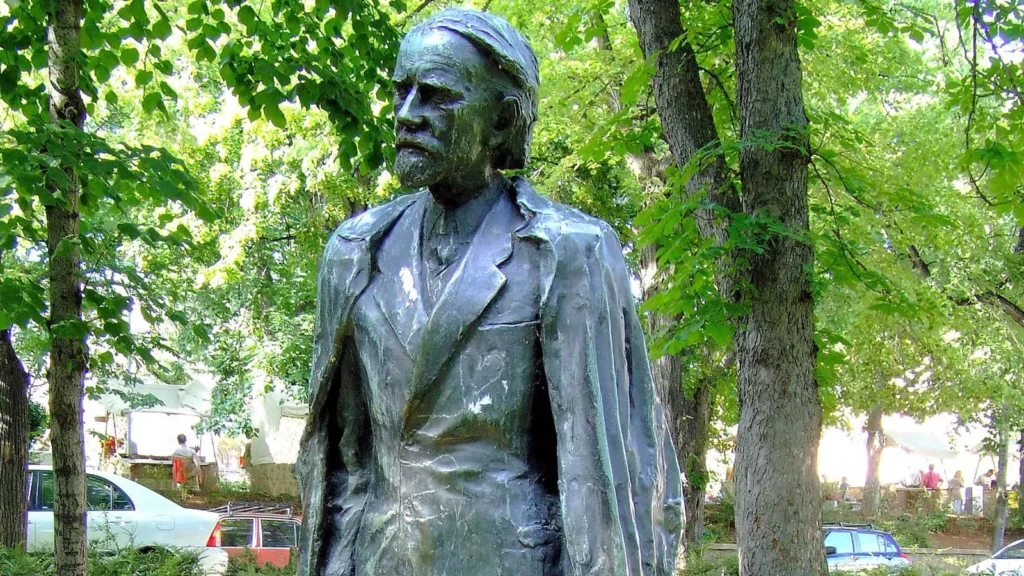Don’t miss Megan’s Inspiring Artistry contribution about J.S. Bach’s Invention in C Minor, which includes exposition on how to effectively teach the piece, all the way from preparation to performance.

1. Kodály wrote for piano and organ!
Besides his many successful works for choir, Kodály wrote 7 Pieces for Piano, Op. 11, a Méditation sur un motif de Claude Debussy for solo piano, and several works for the organ such as Organoedia, a complete mass for solo organ. The 7 Pieces for Piano use a variety of scales and time signatures; No. IV is an arrangement of a popular Szekely folk song. The Szekely people are Hungarians who are somewhat isolated by mountain ranges, so it is likely that Kodály learned this song while on his travels with Béla Bartók. Together, these two ethnomusicologists embarked on a mission to learn and record the many folk songs of Hungary.

2. Kodály did not invent solfa hand signs.
Contrary to popular belief, the hand signs used to show degrees of solfège were not invented by Kodály, but by Sarah Ann Glover, an English music teacher in the 1800s, and popularized by John Curwen. These kinesthetic learning tools use a different hand symbol for each degree of solfège, and help students internalize the relationships and distances between pitches.
3. Kodály wrote a book with over three hundred solfege singing exercises in it!
The 333 Elementary Exercises are short, bite-size examples that are ideal for teaching sight-singing. The first examples in the book use only do and re, while the latest examples use extended pentatonic scales. Each section begins with simple rhythms (mostly quarter notes) and then expands into more difficult rhythms such as dotted rhythms. Kodály educators often follow these sequences in their classrooms, starting with simple songs that use only quarter notes and only two different degrees of solfège, slowly building up to pentatonic scales. Because the use of fa and ti involve half-steps, they tend to be the most difficult for children to hear and sing, and are traditionally taught last.


4. Kodály was a Doctor of Philosophy.
He studied at the Liszt Academy as a young man but also earned degrees in Hungarian and German and a doctorate in linguistics, all from the University of Hungary. Now there are many universities across the world that offer degrees in Music Education with a Kodály emphasis! Many colleges and universities in the United States also offer summer Kodály training programs—these programs are geared toward teachers of elementary music but are excellent for teachers and students in all musical areas.
5. Kodály’s statue faces the site of a former children’s playground.
His love of children and passion for music education prompted the city of Pécs, Hungary, to erect a statue facing a childrens’ playground so that he can forever oversee the children playing. This statue shows Kodály in his later years, thin and somewhat frail, but still deeply caring for the children of his country.

OTHER RESOURCES YOU MIGHT ENJOY
- DISCOVERY POST: Five Things You Might Not Know About Dianne Goolkasian Rahbee by Leonidas Lagrimas
- DISCOVERY POST: Five Composers You Might Not Know Were Influenced by Indonesian Gamelan by Regina Tanujaya
- DISCOVERY POST: Five Things You Might Not Know About Filip Lazar by Danny Milan
- PIANO MAGAZINE: A Philosophy of Piano Pedagogy by Frances Clark
Not yet a subscriber? Join for only $7.99/mo or $36/yr.
Sources
- Zoltán Kodály – Kodály Australia (kodaly.org.au)
- IMSLP507459-PMLP479462-Kodaly_-_7PianoPiecesOp.11_pianoscore.pdf
- Zoltán Kodály | Hungarian composer | Britannica
- Sarah Ann Glover inventor of the Norwich Tonic Sol-fa (norwich-heritage.co.uk)
